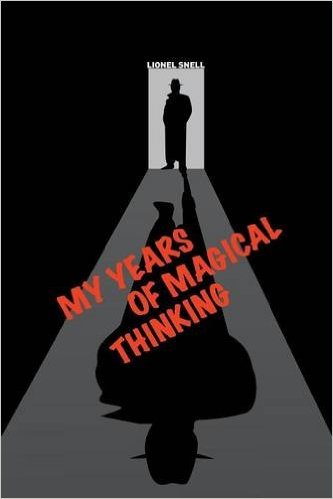
My Years of Magical Thinking by Lionel Snell.
A Review.
If you look up ‘Magical Thinking’ on the internet, the first several dozen entries take a uniformly negative view of it. Scientists, psychologists, and anthropologists tend to regard Magical Thinking as something foolish, childish, or primitive, whilst religious commentators tend to regard it rather negatively as some misguided precursor to proper religion.
However Lionel makes a very strong case for Magical Thinking as a very necessary way of understanding the world and of interacting with it. He also demonstrates that we all use the magical style of thinking, and use it effectively, far more often than we realise, although we do tend to call it by other names, and shy away from fully exploiting it.
Until the advent of this book nobody had managed to properly and inclusively define Magical Thinking. ‘Magical Thinking’ seemed like something you sort of hopefully acquired by osmosis through studying and practicing magic. Unlike ‘Scientific Methods & Principles’ which we can state and teach explicitly, the magical style of thinking remained ill-defined until this seminal book.
So many magical books seem unsatisfactory and this book shows us why. So many of the older and newer magical books failed to encompass real magical thinking and ended up as confusing and confused tomes of either bad science or poor religion or dodgy art, or mixtures thereof.
Perhaps only a thinker such as Lionel, fluent in science, art, magic and religion, and with the keen analytical mind of a mathematician, could have precisely identified what ‘Magical Method & Principles’ actually consist of, precisely how they differ from the methods and principles of science, art, and religion, and how they provide a distinctive and powerful way of interacting with reality.
I had gradually come to assimilate and appreciate some of the methods and principles of magic over the course of a career but to see the whole lot and more, the entire philosophy of it, all in one place, came as a revelation.
I refuse to try and summarise the book here, you must read it yourself, preferably at least twice. Lionel’s exposition of the relationships between art, religion, science, and magic has tremendous depth and subtlety and explanatory power. Most fascinatingly he argues that magical thinking naturally follows on from scientific thinking in a cyclic fashion, rather than acting as some distant precursor for it.
Nobody should attempt to write another book of magic or about magic, until they have thoroughly studied and understood this one.
This book looks like a game-changer.
Pete Carroll.